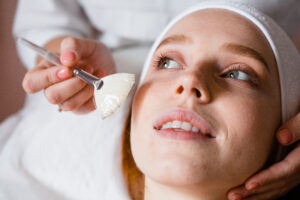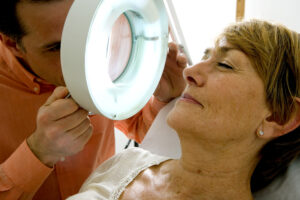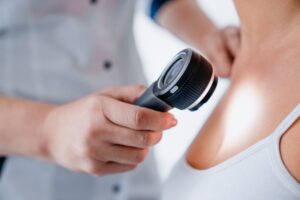The term “age bumps” is often used to refer to a variety of benign skin growths that tend to appear as we age. These growths can vary in appearance and cause.
Keep reading to learn what age bumps are, what causes them, and the various treatment options available at the Dermatology Center of Northern California that can help you achieve a clearer, more even complexion!
What Are Age Bumps?
These growths can take various forms, including:
- Raised, wart-like seborrheic keratoses
- Small, fleshy skin tags
- Flat, brown age spots
- Small, yellowish sebaceous hyperplasia bumps
- Firm, dome-shaped dermatofibromas
While these growths are generally harmless, it’s best to consult a dermatologist for any new or changing skin growth to rule out potential skin cancer. Dr. David No, double board-certified dermatologist at the Dermatology Center of Northern California, a GSD affiliate, emphasizes:
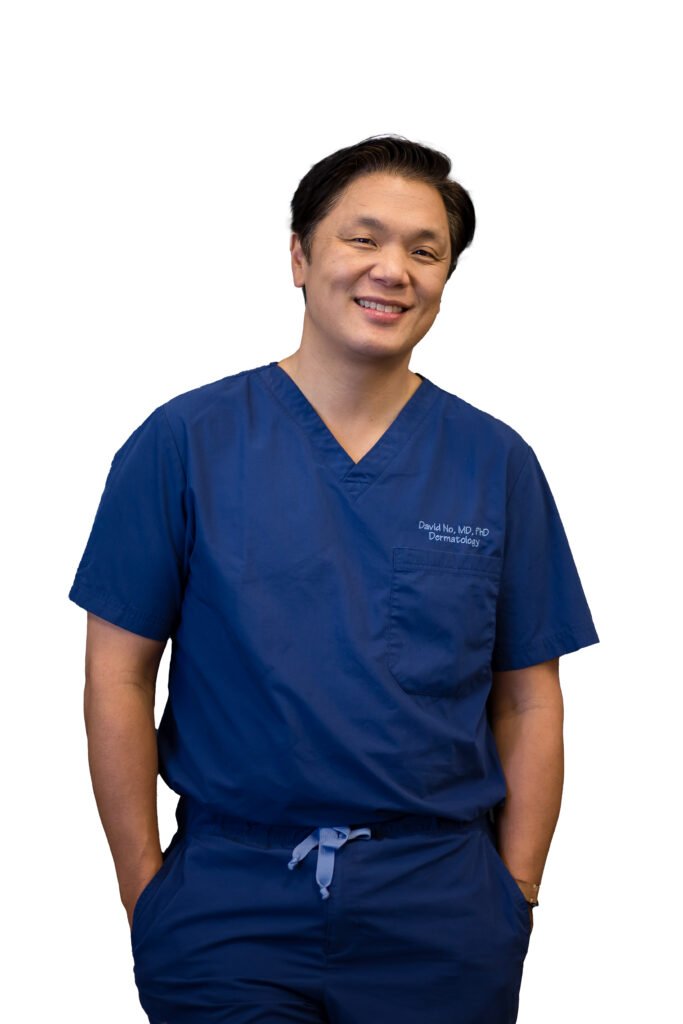
“Understanding how age bumps develop and the factors that contribute to them – such as genetics, sun exposure, hormonal changes, and natural aging processes – is the first step in effectively managing these common skin concerns. This knowledge allows for more targeted prevention and treatment approaches.”
Can I Prevent Age Bumps?
While you can’t completely prevent age bumps, consistent sun protection is key. Always use a broad-spectrum sunscreen with an SPF of 30 or higher, wear protective clothing, and limit sun exposure, especially during peak hours.
Shelby Saltsman, licensed and board-certified physician assistant at Moy-Fincher-Chipps, a GSD affiliate in Los Angeles, explains:
“It is important that individuals protect themselves from harmful UV rays through daily sunscreen use, protective clothing, and limiting sun exposure during peak hours. Certain underlying conditions, such as hormonal imbalances, and genetic predisposition, can increase your susceptibility to developing age bumps. Working with a dermatologist to identify and manage these risk factors is essential for prevention.”
Speaking with your doctor can help you better understand your skin, as well as any conditions you may have. In most cases, you would receive an overall skin assessment to discover more personalized solutions.
What Are the Most Common Skin Growths That Come with Age?
As you age, it’s common to notice new skin growths appearing on your face and body. While some are harmless, others may require medical attention. Here’s a breakdown of some of the most common skin growths that appear after age 45:
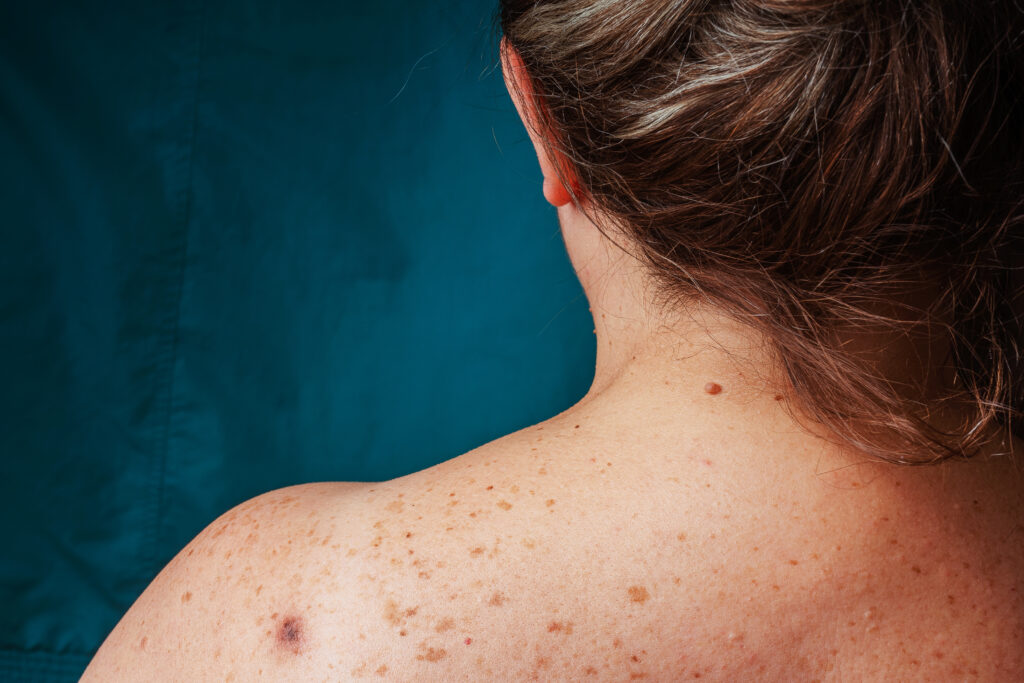
Seborrheic Keratoses
Seborrheic keratoses (SKs) are benign, raised skin growths that often appear with age. They can vary in color from pink to dark brown and have a warty or fleshy texture.
While they’re typically harmless, it’s important to have a dermatologist evaluate any dark brown SKs, as they can sometimes resemble skin cancer.
Skin Tags
Skin tags, also known as acrochordons, are soft, fleshy growths that often appear in skin folds, such as the neck, armpits, and groin. They’re typically harmless but can become irritated or entangled in hair.
Age Spots and Melasma
Age spots, or lentigines, are flat, brown spots that often appear on sun-exposed areas of the skin, such as the face, hands, and arms. Melasma is a similar condition that often presents as brown patches on the face, particularly in women.
Both conditions are caused by increased melanin production and can be treated with various methods, including topical creams, laser therapy, and chemical peels.
Actinic Keratosis
Actinic keratosis (AK) is a precancerous skin condition that often appears as rough, scaly patches on sun-exposed areas of the skin. It’s important to have AKs treated by a dermatologist to prevent them from developing into skin cancer.
Dermatofibromas
Dermatofibromas are firm, dome-shaped bumps that often develop after a skin injury, such as an insect bite or pimple. They’re typically harmless and don’t require treatment.
Sebaceous Hyperplasia
Sebaceous hyperplasia is a common skin condition characterized by small, yellow, or flesh-colored bumps on the face. It’s often associated with hormonal changes, particularly in older adults.
While it’s harmless, it can be treated with various methods, including laser therapy and topical medications.
What Causes Age Bumps?
Sun exposure is the leading cause of age spots. Ultraviolet (UV) rays from the sun damage the skin cells, stimulating the production of melanin in an attempt to protect the skin.
The exact causes of age bumps, or benign skin growths, are not fully understood, but several factors are believed to contribute. Sun exposure is a significant factor, as UV radiation can accelerate skin aging and trigger the development of certain growths like age spots and actinic keratosis.
Hormonal changes, particularly during menopause, can influence the appearance of sebaceous hyperplasia. Genetic predisposition also plays a role, as some individuals may be more prone to developing certain types of skin growths.
How to Prevent Age Bumps
While age bumps cannot be completely prevented, there are steps you can take to minimize their appearance and slow down their development.
Sun Protection
This is the single most important step you can take to prevent age spots. Use a broad-spectrum sunscreen with SPF 30 or higher every day, even on cloudy days. Reapply sunscreen every two hours, or more often if you are sweating or swimming.
Sun-Protective Clothing
Wearing hats with wide brims, sunglasses, and long-sleeved shirts can provide additional protection from the sun’s harmful rays.
Limit Sun Exposure
Avoid peak sun hours (between 10 am and 4 pm) whenever possible. Seek shade when outdoors.
What Are Treatment Options for Age Bumps?
Several treatment options are available at the Dermatology Center of Northern California to help fade and reduce the appearance of age bumps. The best approach for you will depend on the severity of your age spots, your skin type, and your individual preferences.
Your doctor will work with you to create a personalized treatment plan to achieve your desired results. Here’s a look at some of the most common age spot treatment options.
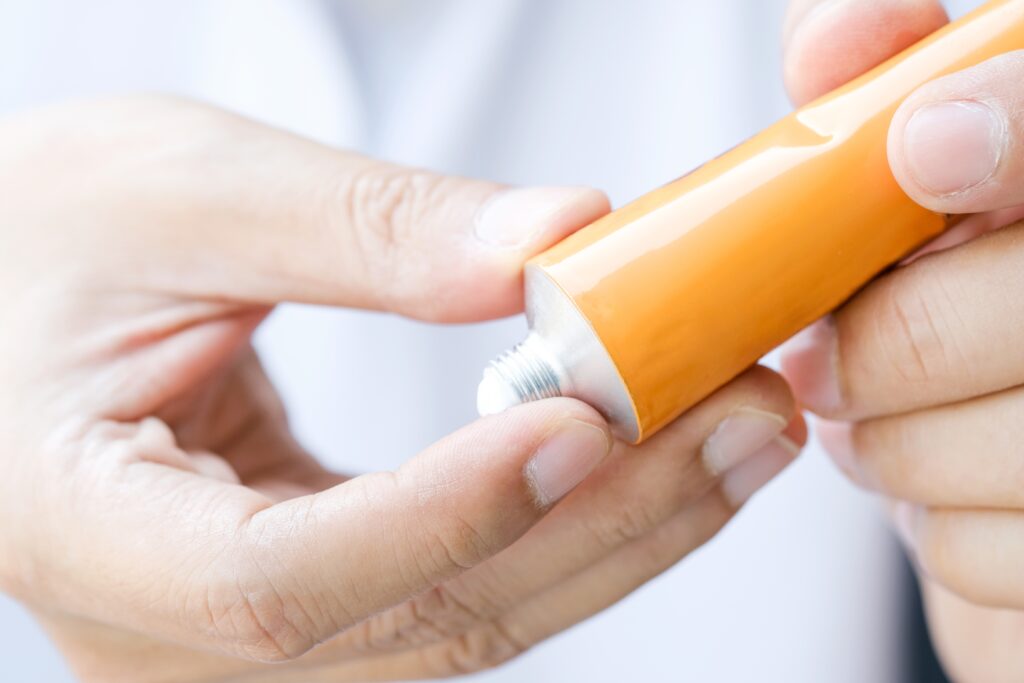
Topical creams
Many over-the-counter and prescription creams are available that contain ingredients like hydroquinone, kojic acid, and retinoids. These creams work by lightening the skin and reducing melanin production.
Chemical Peels
Chemical peels involve applying a chemical solution to the skin to remove the top layer. This can help to fade age bumps and improve the overall texture and tone of the skin.
Microdermabrasion
This minimally invasive procedure uses tiny crystals to exfoliate the top layer of skin. Microdermabrasion can be effective in lightening age bumps and promoting smoother skin.
Cryotherapy
Freezes and destroys skin growths like seborrheic keratoses and skin tags.
Laser therapy
Laser treatments use concentrated light beams to target and destroy melanin-producing cells in the skin. Laser therapy can be a very effective treatment for age spots, particularly for stubborn or deeper spots.
Schedule an Appointment at Dermatology Center of Northern California Today
If you have questions about your skin or are interested in learning more about treatment options for age bumps, schedule an appointment at Dermatology Center of Northern California today. Our team of experienced dermatologic surgeons is here to help you achieve your healthiest, most beautiful skin.
